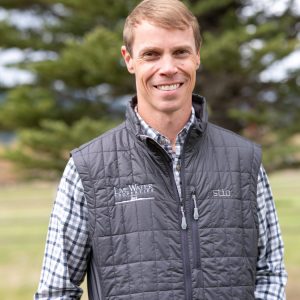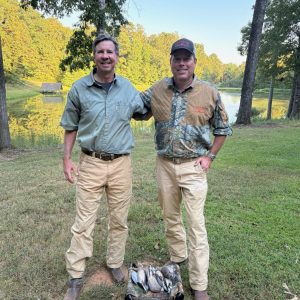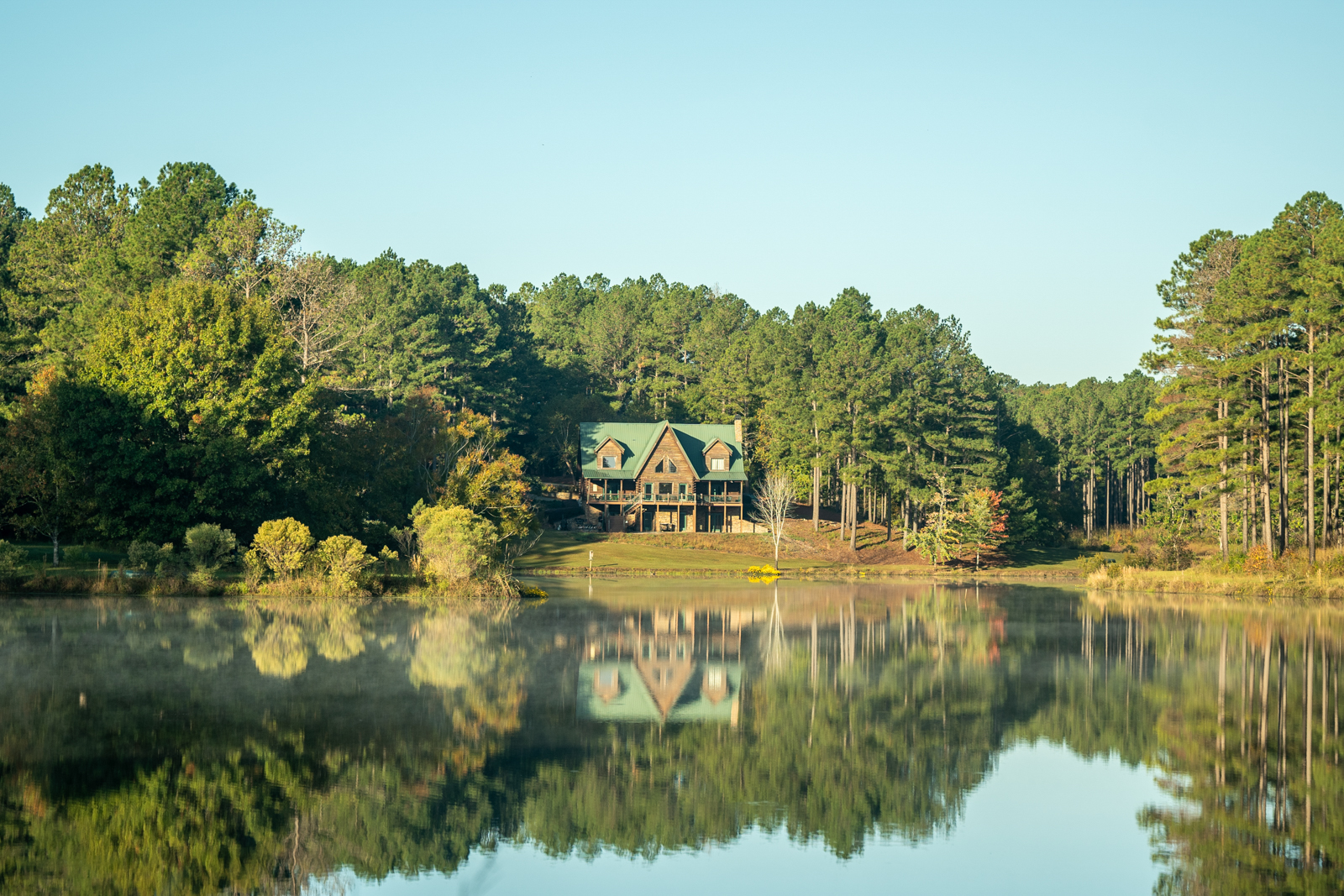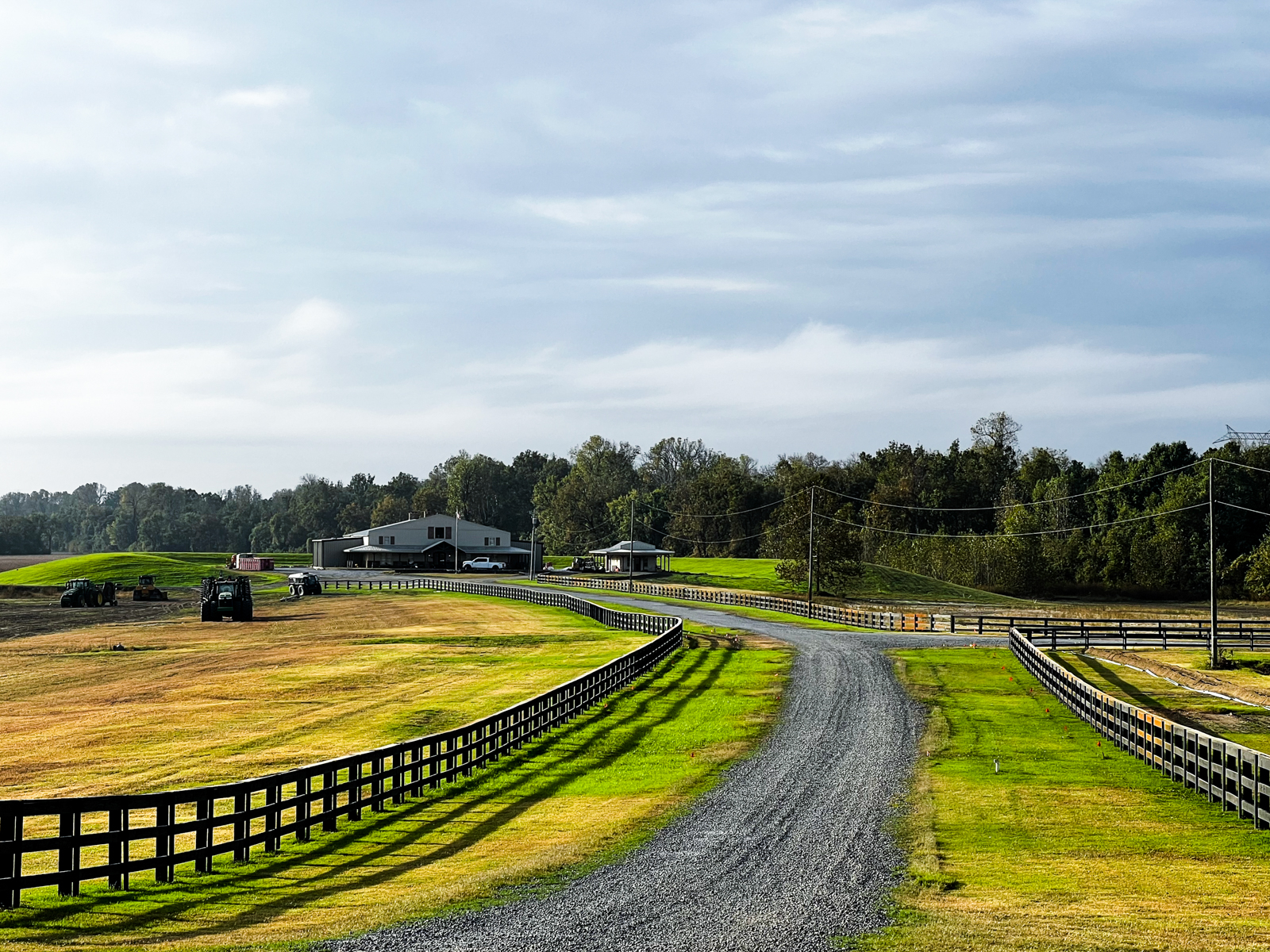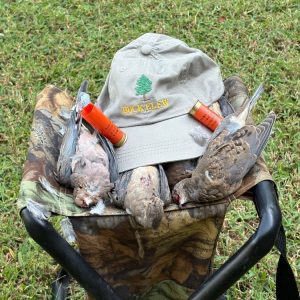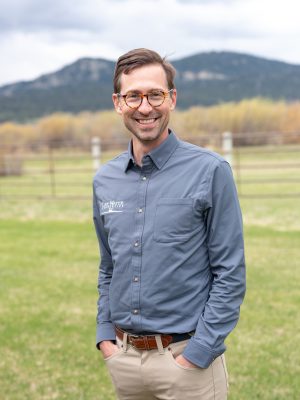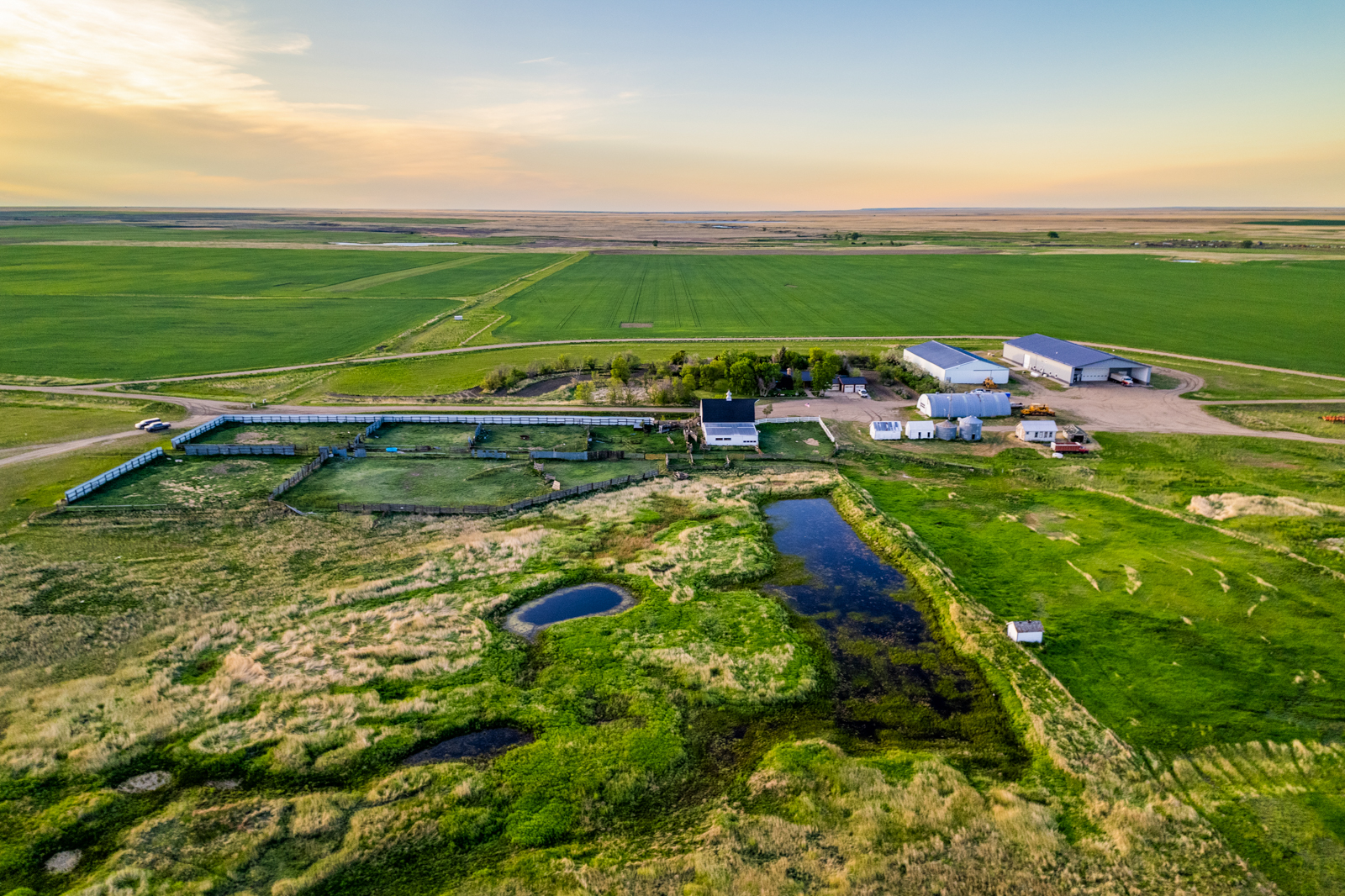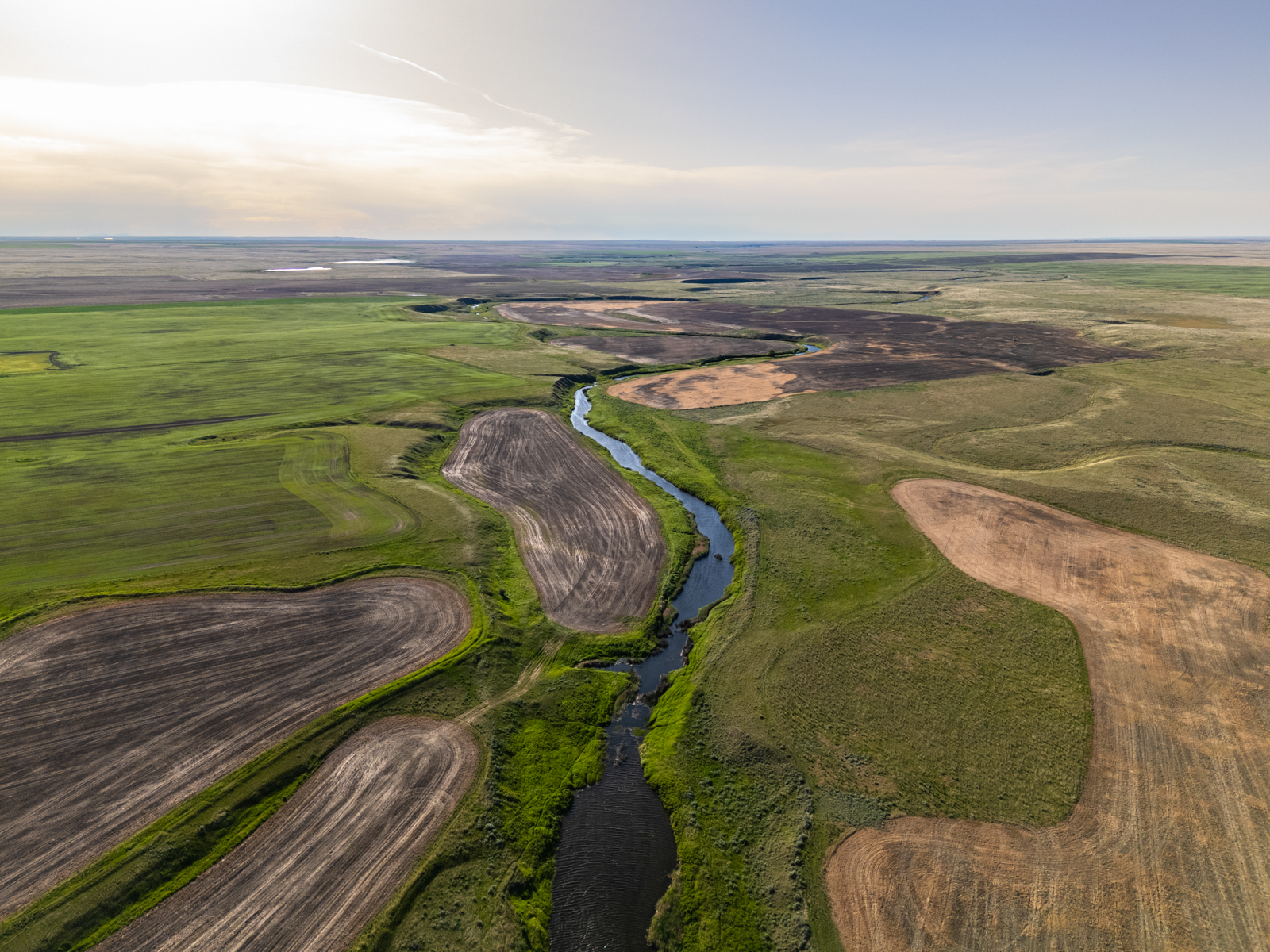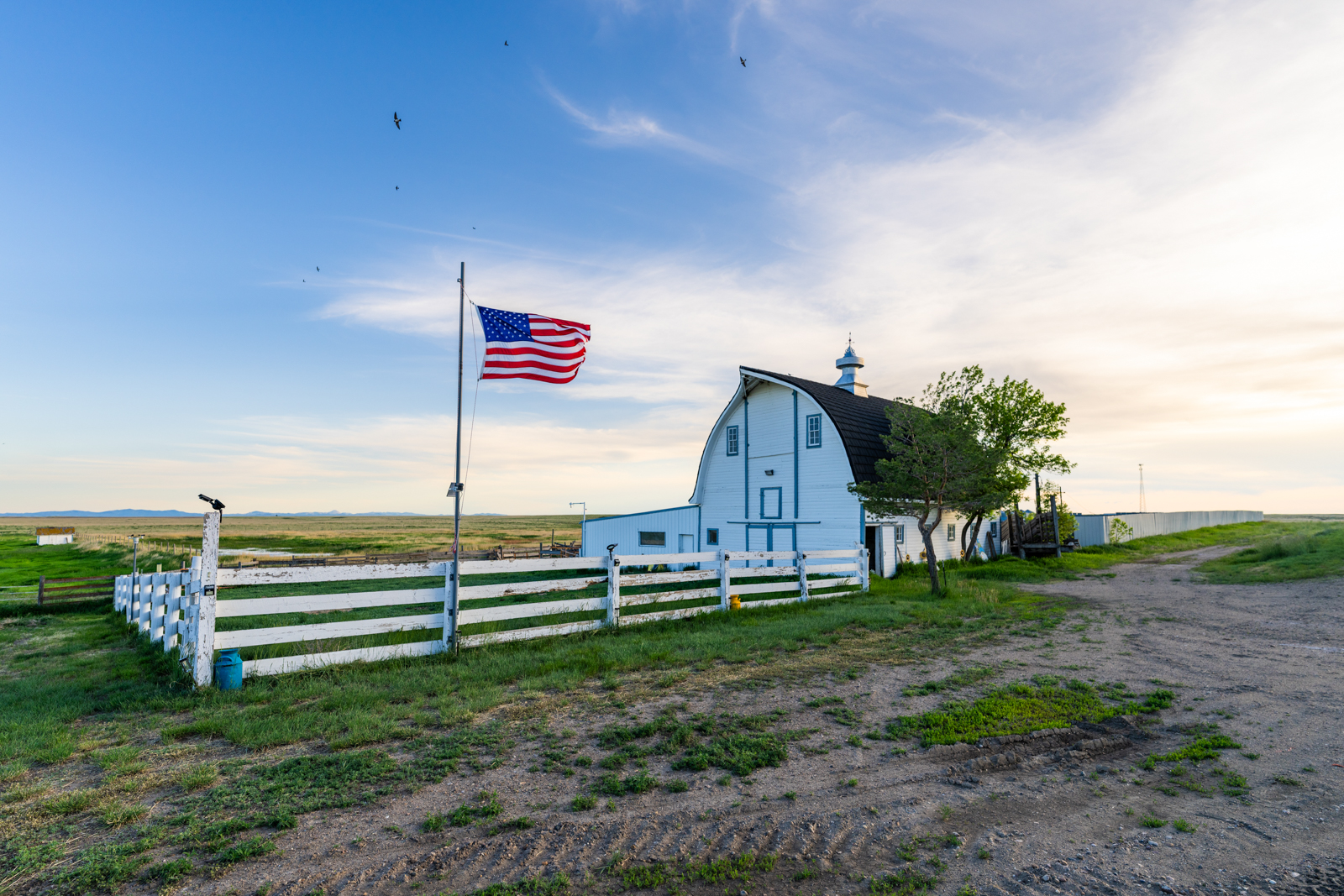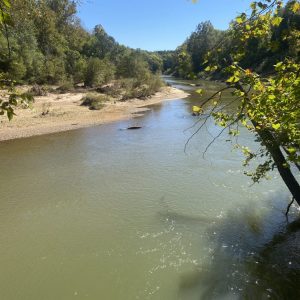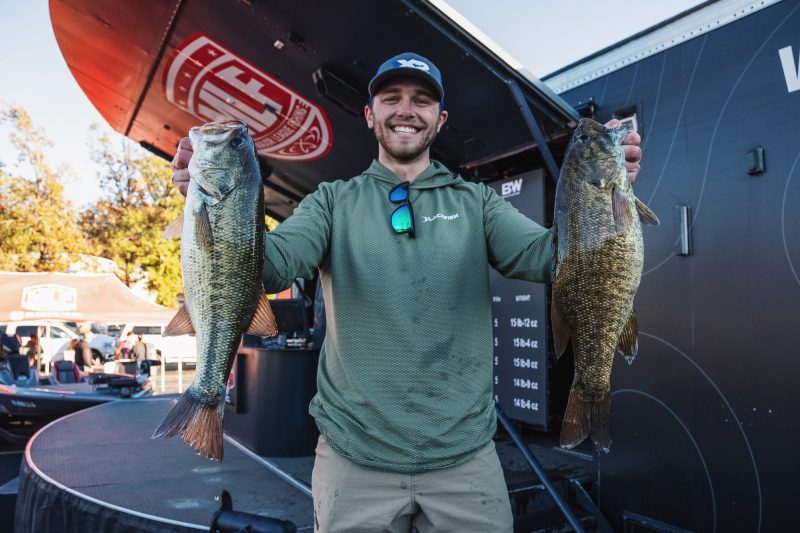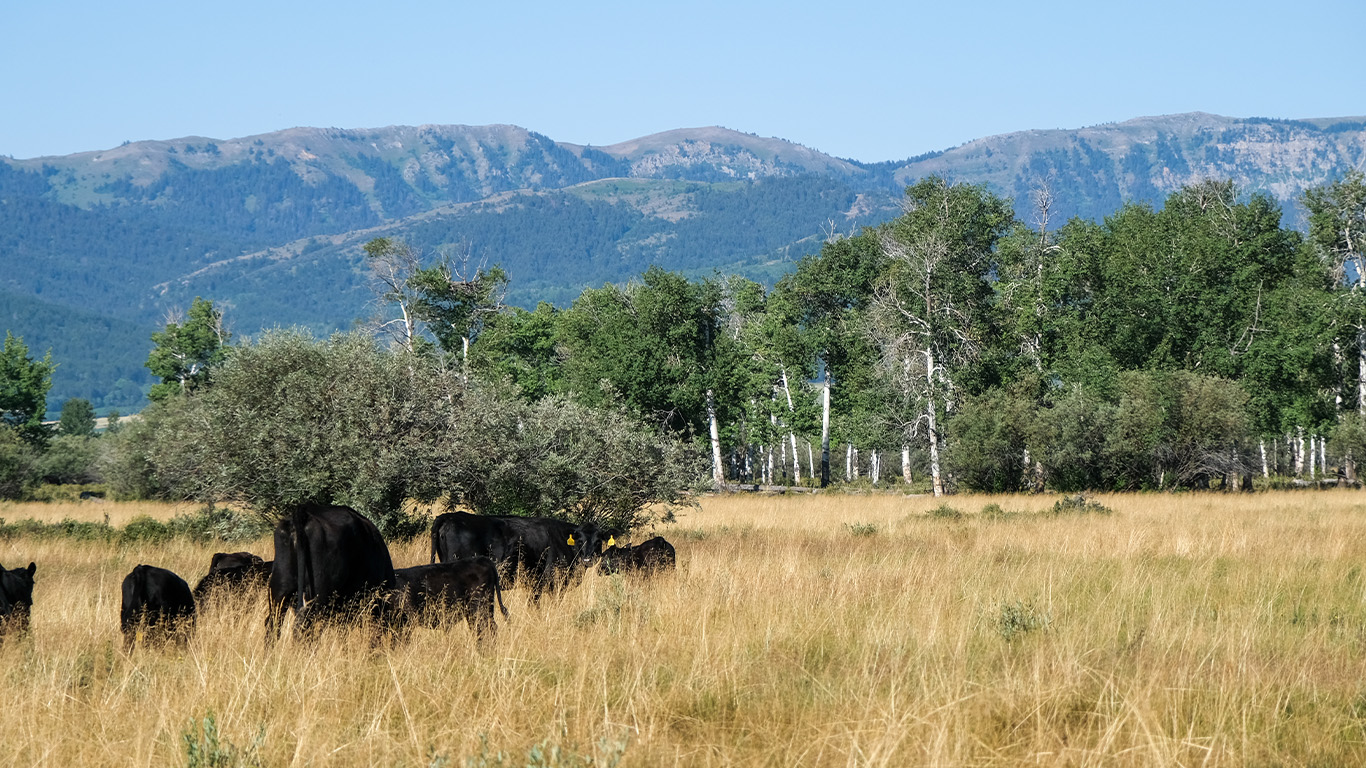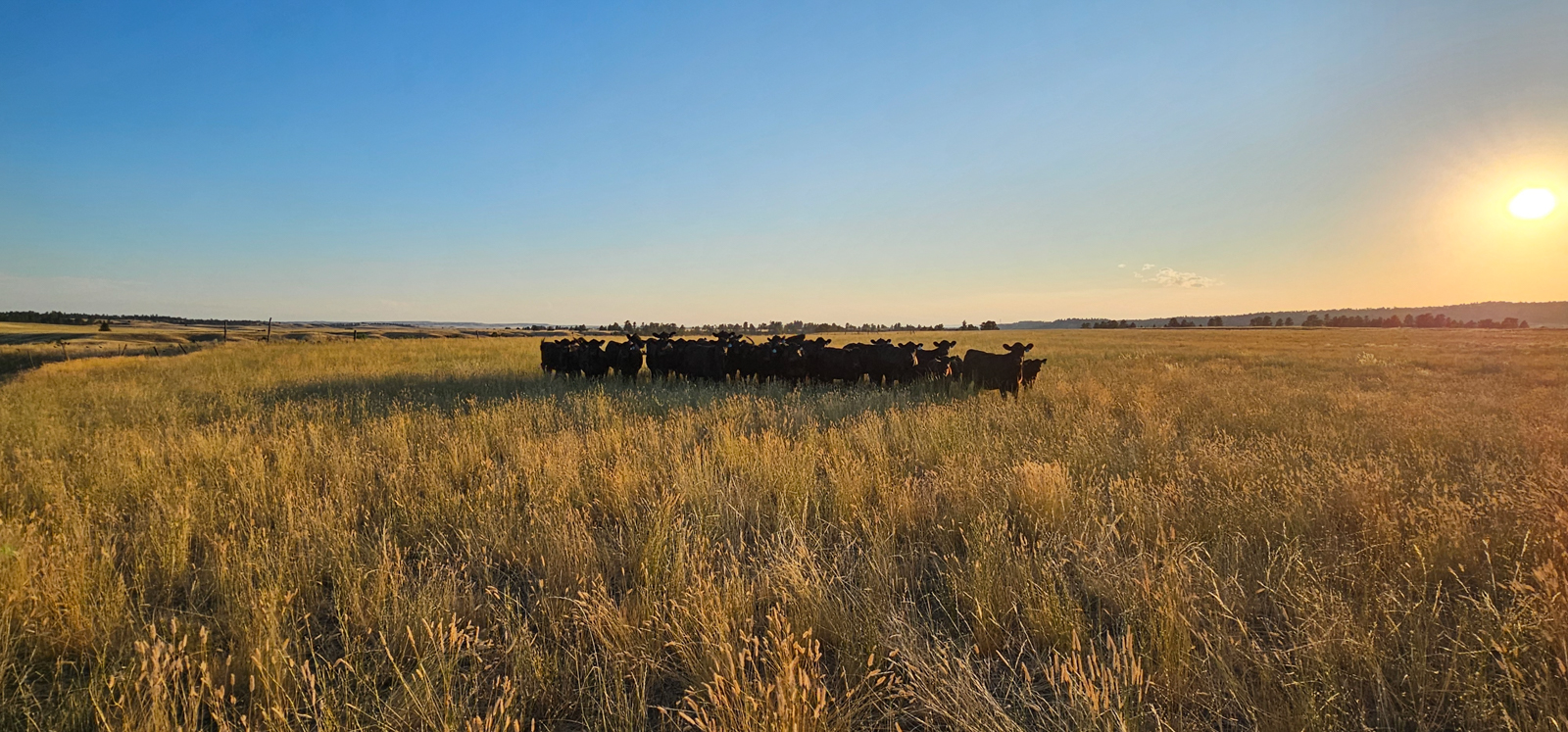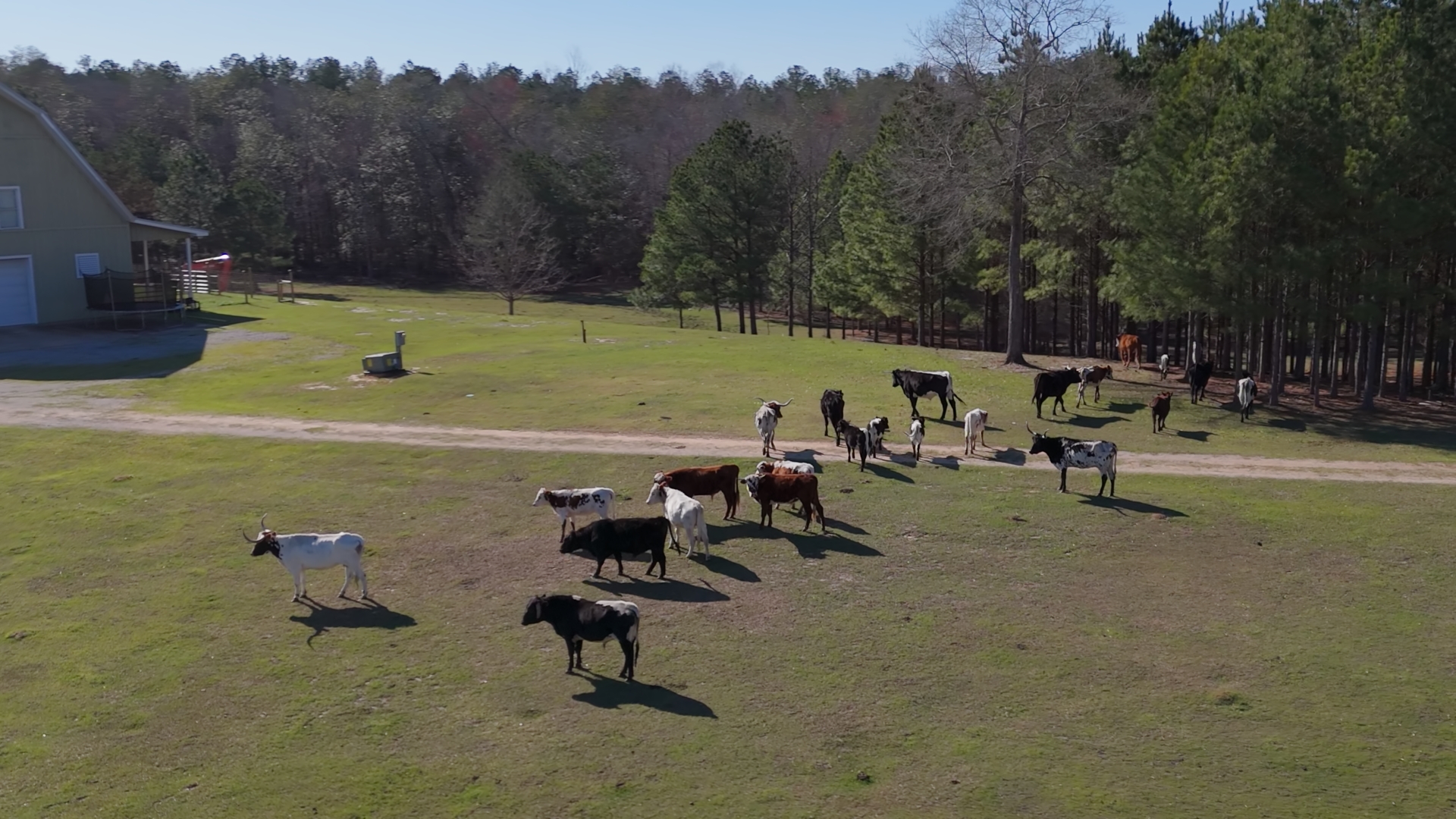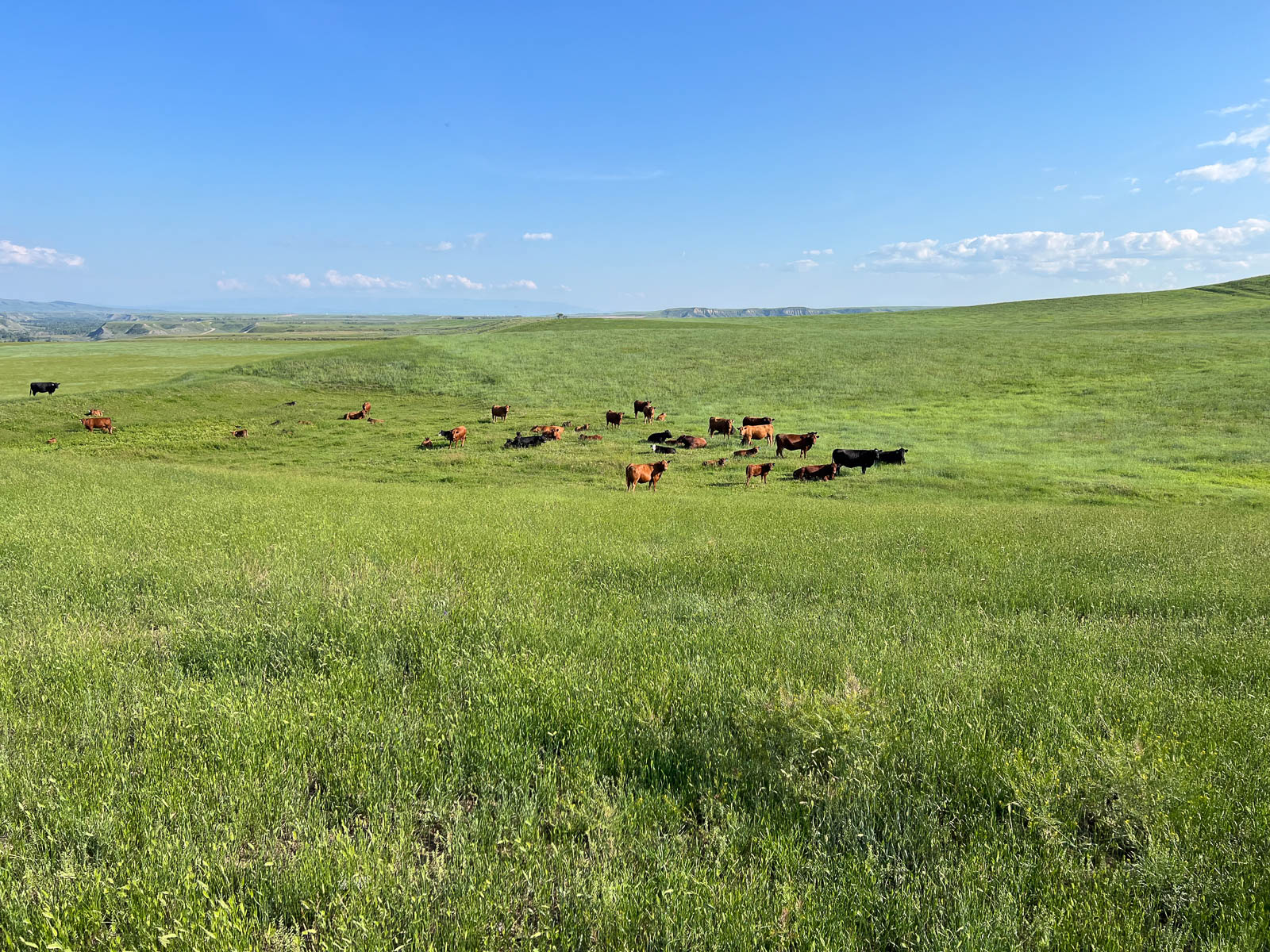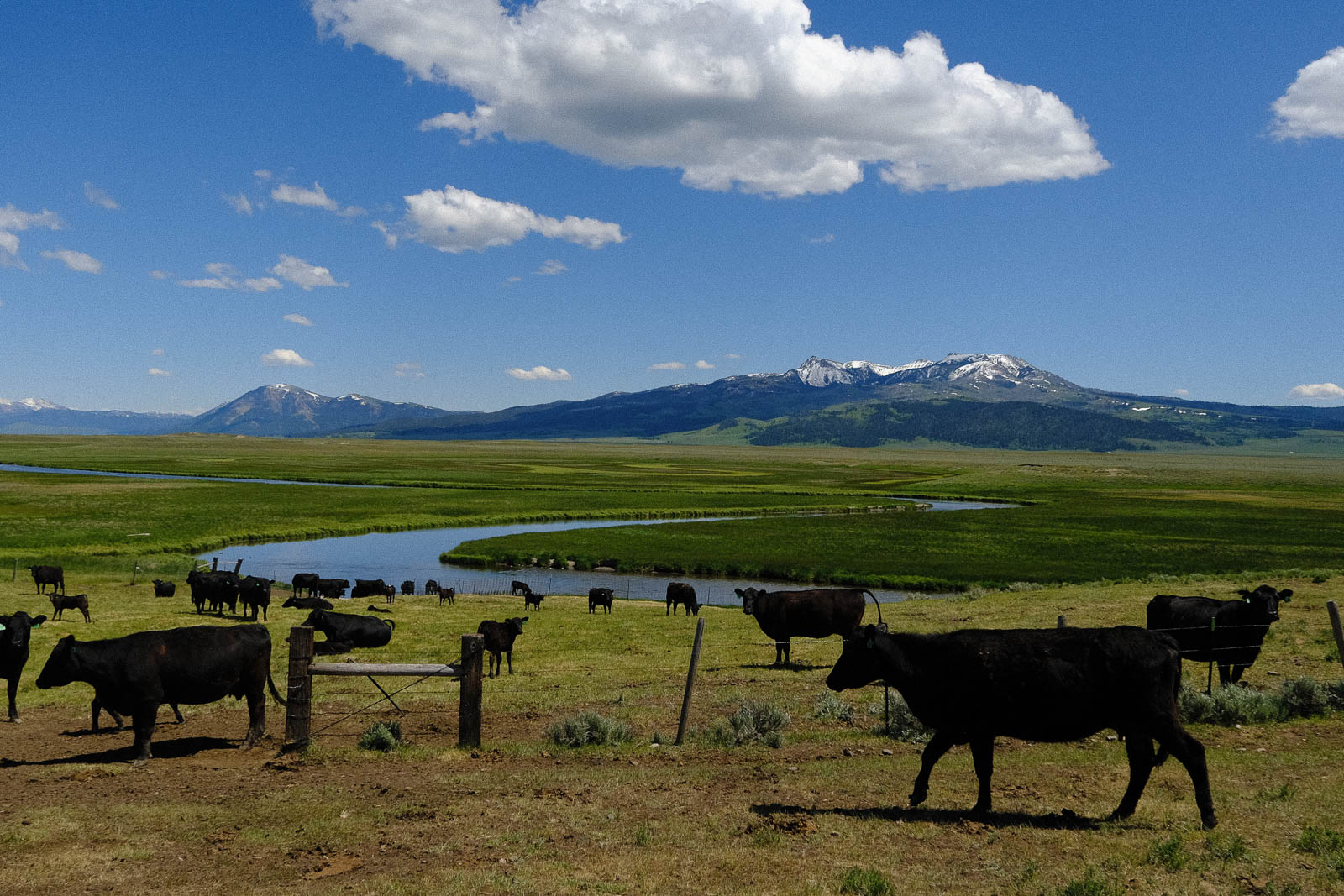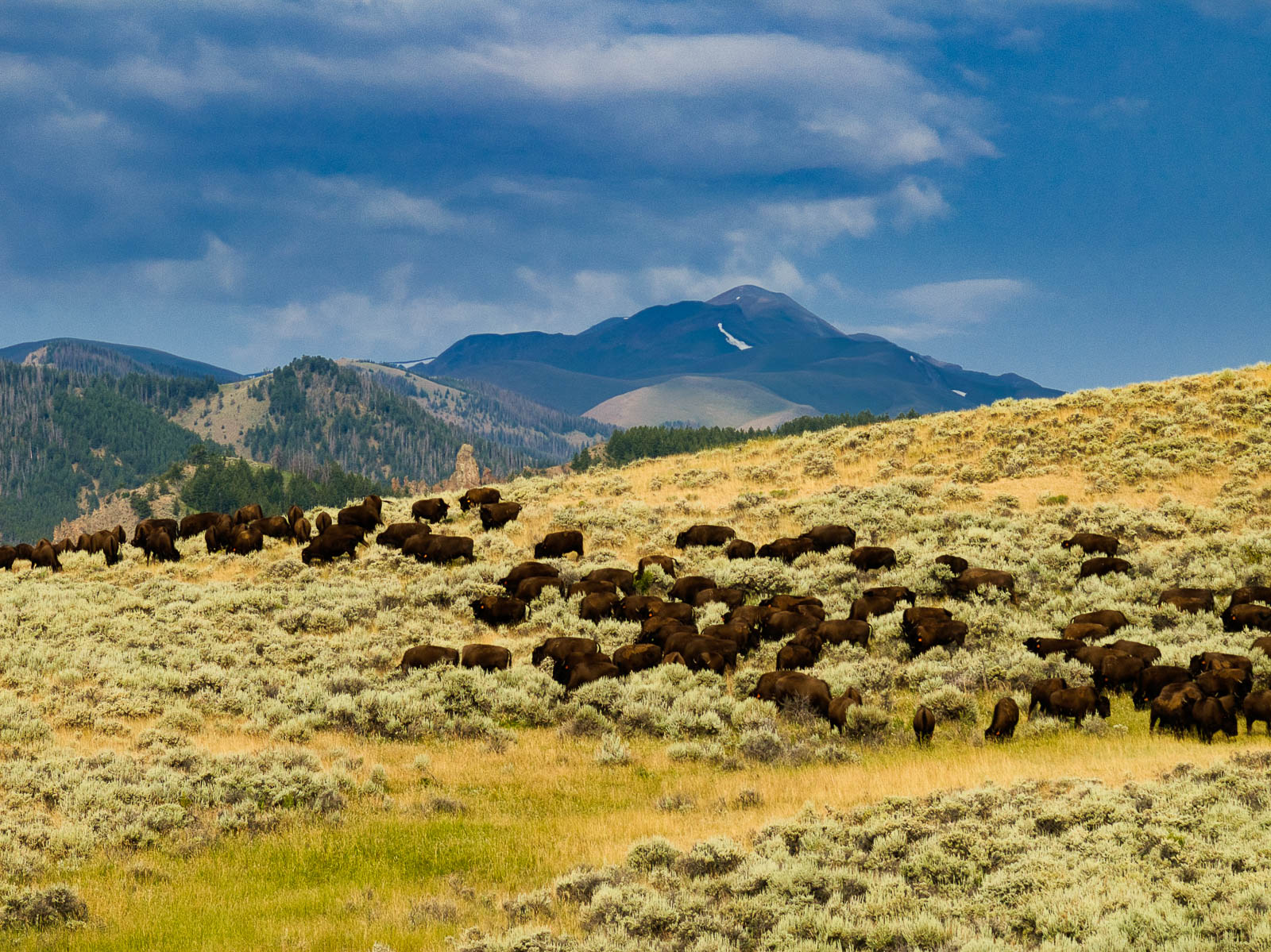Bird hunting season stirs memories of early mornings with hand-me-down shotguns, gas station biscuits, and those unforgettable hunts we’ll always try to relive. Whether you’re watching mallards circle overhead or walking a field behind your pointer, this season holds something special for every hunter. Explore our Waterfowl and Upland Bird Hunting Properties to create lasting memories with family and friends.
Bird Hunting Properties in Tennessee
Island 34 | Lauderdale County, TN | 2,549 Acres
Island 34 is a premier 2,549-acre waterfowl sanctuary in northwest Tennessee’s Mississippi Flyway, created through three years of vision and conservation by hunter-conservationist Ruste Via. Surrounded by more than 90,000 acres of wetlands and farmland, the property is one of the best bird hunting properties in Tennessee as it features a natural river chute, flooded corn and rice fields, mature timber, and managed wetlands that sustain a thriving ecosystem. Waterfowl numbers have grown dramatically—from 90,000 to over 400,000 wintering ducks, including mallards, pintails, and green-winged teal.
Designed for habitat sustainability and world-class hunting, Island 34 offers 12 designated hunting areas: nine field blinds and three flooded timber sites. Among them are luxury pit and container blinds equipped with electricity, heating, and cooking; others feature risers to maintain open water in freezing conditions. Four blinds are ADA-accessible, all with drive-up access, accommodating up to twelve hunters and two guides each.
At the heart of the property is a 16,000 sqft lodge blending rustic Southern charm with modern comfort. Featuring 17 bedrooms, 17.5 baths, and space for 30 guests, it offers fireplaces, a handcrafted bar, a grand dining room, and an observation deck overlooking the wetlands. Island 34 stands as a testament to conservation, craftsmanship, and the enduring heritage of waterfowl hunting.
2025 Waterfowl Season (Mississippi Flyway) – November 29th – November 30th, 2025 | December 5th – January 31st, 2026
Bird Hunting Properties in Idaho
Anderson Ranch | Mountain Home, ID | 3,896 Acres
Anderson Ranch is a notable early-season waterfowl property in South-Central Idaho. The Ranch’s three ponds and 40-acre reservoir naturally attract strong flights of ducks and geese during early migration. Productive grain fields on the property provide an abundant food source that keeps birds in the area through the first part of the season. While primarily known for its waterfowl opportunities, the sagebrush edges and crop transitions also hold the occasional Hungarian partridge, adding variety to the experience.
2025 Upland Bird Season – August 30th – January 31st
2025 Waterfowl Season (Pacific Flyway) – October 19th – January 31st
Bull Elk Creek Ranch | Felt, ID | 421.32 Acres
Bull Elk Creek Ranch showcases rolling fields, mature groves of aspen and conifers, and the riparian corridor of Bull Elk Creek—all set against the striking backdrop of four peak Teton views. Tucked at the end of a quiet county road, the property offers exceptional privacy and a balance of agricultural productivity and wildlife cover, ideal for upland bird habitat. Approximately 350 acres are leased to a local tenant farmer and planted annually with small grains. This blend of farmland, native cover, and creekside habitat makes Bull Elk Creek Ranch a premier sanctuary for upland birds, offering exceptional opportunities for both conservation and sport.
2025 Upland Bird Season – August 30th – January 31st
2025 Waterfowl Season (Pacific Flyway) – October 4th – December 28th
Two Canyons Ranch | Kamiah, ID | 2,015 Acres
Two Canyons Ranch supports an exceptional mix of bird species across its canyons, riparian zones, and farmland. The Ranch is a paradise for the upland hunter, offering a level of diversity that is difficult to find across the West. Pheasants and Hungarian partridge roam the tall grasses near the farm fields, while chukar call out from the rocky cliffs and rolling hillsides. The hillsides and riparian creek bottoms are home to quail and the occasional grouse, creating varied hunting experiences throughout the landscape. Although waterfowl hunting is secondary, the property’s ponds and waterways attract seasonal ducks, creating additional variety to the hunting experience.
2025 Upland Bird Season – August 30th – January 31st
2025 Waterfowl Season (Pacific Flyway) – October 19th – January 31st
Henry’s Fork Confluence Ranch | Rexburg, ID | 256 Acres
Situated along the Henry’s Fork River, this ranch is among the best bird hunting properties and is a waterfowl and upland bird hunter’s haven. The riparian corridors, cottonwood stands, agricultural aspects, and side channels host strong populations of ducks and geese, complemented by abundant upland birds such as pheasants and grouse. A half mile north of the Ranch, the Cartier Slough Wildlife Management Area (961 acres) enhances the surrounding ecological value. Established in 1976 to offset wetland and waterfowl habitat loss from dam construction, Cartier Slough WMA includes cottonwood groves, willow thickets, floodplain grasslands, and seasonal wetlands. Managed by the Idaho Department of Fish and Game, it supports over 200 wildlife species. Together, the Ranch and Cartier Slough WMA, create an unparalleled setting for hunters and conservationists alike, where thriving waterfowl and upland bird populations reflect the region’s rich habitat diversity and enduring ecological stewardship.
2025 Upland Bird Season – August 30th – January 31st
2025 Waterfowl Season (Pacific Flyway) – October 4th – January 16th
Norway Canyon Hunting Retreat | Kamiah, ID | 655 Acres
The Norway Canyon Hunting Retreat is a premier upland property offering a variety of bird species across its 655 acres. Pheasants, Hungarian partridge, chukar, quail, and the occasional grouse thrive in the mix of farmland, canyon slopes, and timbered draws. The fully furnished main lodge offers six luxury bedrooms, spacious living areas, and a chef-designed commercial kitchen for restaurant or catering use. Additional features include a pro shop, office, and expansive indoor and outdoor dining spaces centered around an elegant bar and dining area that can accommodate up to 100 guests. The Retreat also features three guest cabins and extensive recreational facilities, including a five-stand shotgun range, skeet shooting range, and pistol and rimfire range. These features make Norway Canyon Hunting Retreat a spectacular destination for sportsmen and guests alike, blending upland hunting opportunities with first-class lodging and recreational amenities in a premium setting.
2025 Upland Bird Season – August 30th – January 31st
Long Hollow Ranch | Madison County, ID | 616.8 Acres
Long Hollow Ranch sits in the foothills of the Teton Range and provides excellent upland and waterfowl opportunities. Pheasants, grouse, and other upland species are common across the CRP fields, aspen groves, and coulees, while ducks frequent the lower riparian areas. The Ranch can also support recreational leasing opportunities. The current owner has partnered with a regional upland bird hunting outfitter, who has established approximately 20 acres of food plots, divided into smaller sections. These plantings not only attract native wildlife but also provide habitat for farm-raised birds released on the Ranch each fall hunting season. The Ranch’s 616 acres of mixed habitat create a balanced environment for both hunting and conservation.
2025 Upland Bird Season – August 30th – January 31st
2025 Waterfowl Season (Pacific Flyway) – October 4th – January 16th
Bird Hunting Ranches in Montana
LC Ranch | Three Forks, MT | 1,121 Acres
The LC Ranch offers the opportunity to decoy or jump shoot ducks and geese in the morning, followed by hunting for Hungarian partridge and pheasant in the afternoon of the same day, all within its 1,121 acres of rangeland, historic crop ground, and riparian habitat. A proportionate amount of water on the property does not freeze in winter, and ducks and geese are often seen in large numbers on the Ranch beginning in mid to late November. Coveys of Hungarian partridge are scattered throughout the property, and the riparian areas of the Ranch support a modest population of pheasant. The Ranch has abundant water resources and tremendous cover habitat, which could be enhanced appreciably from a wildlife standpoint by seeding portions of the property with food crops favored by wildlife.
2025 Upland Bird Season – September 1st – January 1st
2025 Waterfowl Season (Pacific Flyway) – October 4th – January 16th
The Schellin Ranch | Chinook, MT | 8,000 Acres
Located along Montana’s Hi-Line, The Schellin Ranch’s combination of native grasses, cropland, and coulees provides ideal cover, feed, and nesting grounds that sustain healthy pheasants, Hungarian partridge, and sharp-tailed grouse year after year. A particularly unique feature is a section of the Ranch specifically managed to enhance upland bird habitat. Ample water and the Ranch’s strong agricultural productivity draw waterfowl to the low-lying wetlands and natural drainage areas scattered throughout the property. For the sportsman or conservation-minded buyer, this ranch offers an exceptional opportunity to enjoy hunting alongside productive farming and ranching operations.
2025 Upland Bird Season – September 1st – January 1st
2025 Waterfowl Season (Central Flyway) – October 4th – January 8th
Bowman Creek Ranch | Ashland, MT | 3,350 Acres
Located in the heart of Southeastern Montana’s wild and scenic Rosebud County, this ±3,350 deeded-acre ranch—plus a centrally located 640-acre BLM lease— is one of the most scenic bird hunting properties that supports both agricultural productivity and rich wildlife habitat across riparian zones, native grasslands, and timbered ridges. Sharp-tailed grouse and pheasants thrive throughout the property, while the nearby Tongue River attracts ducks and geese. In early fall, before the river freezes, ducks and geese flock to the area, creating excellent waterfowl hunting opportunities. The river corridor, surrounding fields, and wooded ridges serve as key flight paths and feeding zones, providing prime habitat for upland birds and seasonal waterfowl, making this a highly diverse sporting property.
2025 Upland Bird Season – September 1st – January 1st
2025 Waterfowl Season (Central Flyway) – October 4th – October 12th | October 25th – January 20th
Montana Riverfront Resort | Fort Smith, MT | 107 Acres
Montana Riverfront Resort was built, owned, and operated by the same family for over 30 years. This legendary resort offers a special opportunity to own a fully established, turn-key fly fishing and upland bird hunting destination in the heart of South-Central Montana. The region’s geography ranges from rich irrigated farmland and rolling grasslands to lush cottonwood-lined river bottoms and dramatic alpine terrain, offering upland bird hunters an abundance of pheasants, sharp-tailed grouse, and Hungarian partridge throughout the area. At the same time, the property’s river frontage offers substantial potential for expanding into waterfowl hunting. The river remains ice-free during the winter months, allowing for hunting throughout the season. At the center of the property is the Orvis-Endorsed main lodge, a thoughtfully designed structure that captures the spirit of Western hospitality. Guest accommodations include seven spacious one-bedroom, one-bath cabins, each offering privacy, scenic views, and easy access to all lodging amenities. Outdoor features include a trap shooting area, two tranquil ponds, and a large firepit gathering space—ideal for evening drinks and conversation after a memorable day afield. Its established reputation and outstanding habitat make it a well-rounded recreational retreat.
2025 Upland Bird Season – September 1st – January 1st
2025 Waterfowl Season (Central Flyway) – October 4th – October 12th | October 25th – January 20th
Bird Hunting Ranches in Wyoming
Double J Ranch | Daniel, WY | 3,430 Acres
Situated an hour’s drive south of Jackson Hole, Double J Ranch lies in the heart of a sage-grouse critical habitat area designated by the Natural Resources Conservation Service, offering outstanding upland bird hunting amid rolling sagebrush hills. The Ranch’s irrigated meadows and wetlands further enhance its appeal, supporting waterfowl. With a 5,800 sqft custom residence and six guest cabins accommodating up to 17 guests, Double J Ranch combines premier bird habitat with exceptional comfort, making it an ideal retreat for hunters and outdoor enthusiasts alike.
2025 Upland Bird Season – September 1st – January 31st
2025 Waterfowl Season (Pacific Flyway) – September 27th – January 9th
Cakebread Ranch | Thayne, WY | 220 Acres
With nearly two miles of open water along the Salt River, Cakebread Ranch offers extraordinary waterfowl hunting for mallards, geese, and various duck species. Irrigated meadows and riparian corridors provide additional habitat, giving hunters a mix of water and field shooting opportunities within a well-managed property. Originally designed as a clubhouse for ranch guests, the lodge invites relaxation and refinement, offering world-class dining after a day on the field and a nightcap by the outdoor riverside fireplace. There are current plans to convert the office in the lodge into guest quarters to accommodate owners overnight in this remarkable setting.
2025 Upland Bird Season – September 1st – January 31st
2025 Waterfowl Season (Pacific Flyway) – September 27th – January 9th
Soaring Eagle Ranch | Ranchester, WY | 287 Acres
Located minutes from the historic town of Sheridan, WY, Soaring Eagle Ranch spans nearly a mile along both sides of the iconic Tongue River, which winds gracefully through this remarkable property. Lush vegetation, cottonwood-lined riverbanks, and open meadows create ideal habitat for pheasants, Hungarian partridge, and sharp-tailed grouse, while freshwater sloughs, wetlands, and irrigated fields attract abundant ducks and geese. Whether hunting over water or in dry fields, sportsmen will find Soaring Eagle Ranch an outstanding destination that seamlessly blends productive agriculture, diverse wildlife habitat, and unmatched natural beauty.
2025 Upland Bird Season – September 1st – January 31st
2025 Waterfowl Season (Central Flyway) – September 21st – January 9th
Nieslanik Ranch | Cokeville, WY | 399 Acres
Located five miles north of Cokeville, WY, in Lincoln County, the Nieslanik Ranch is one of bird hunting properties that not only encompasses 399 deeded acres, but also has 360 acres of highly productive irrigated fields and pastures. Set along Chalk Creek and adjacent to thousands of acres of public land, pride of ownership is clear from the well-maintained pivot-irrigated fields to the mature landscaping surrounding the residence. With 25 years of dedicated care, the Ranch is a haven for wildlife, including waterfowl like ducks, geese, and Sandhill cranes. Its ½ mile proximity to the Bear River makes it an ideal spot for waterfowl hunting and wildlife observation.
2025 Upland Bird Season – September 1st – January 31st
2025 Waterfowl Season (Pacific Flyway) – September 27th – January 9th
Bird Hunting Properties in Georgia
Mann Creek Retreat | Tallapoosa, GA | 319 Acres
Mann Creek Retreat offers duck and goose hunting across its 14-acre private lake, two miles of Mann Creek frontage, and the nearby Tallapoosa River. The property’s blend of open water, flooded bottoms, and managed pastures creates an ideal waterfowl habitat that attracts migrating and local birds throughout the season. The retreat combines exceptional hunting opportunities with comfortable lodging, scenic building sites, and a master plan for future expansion or conservation.
2025 Upland Bird Season – November 8th – February 28th
2025 Waterfowl Season (Atlantic Flyway) – November 22nd – November 30th | December 6th – January 25th



